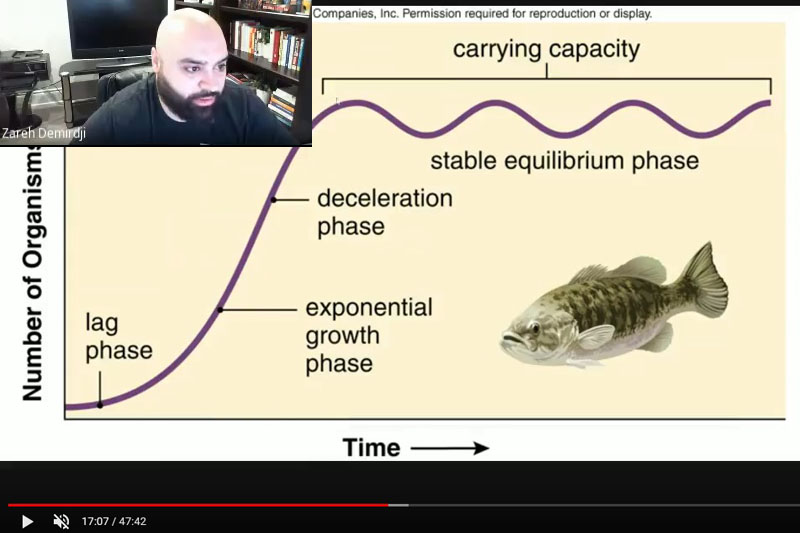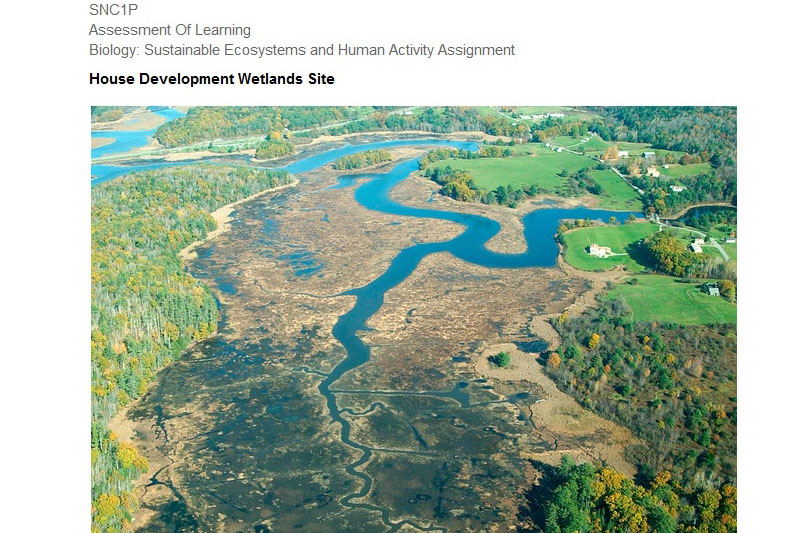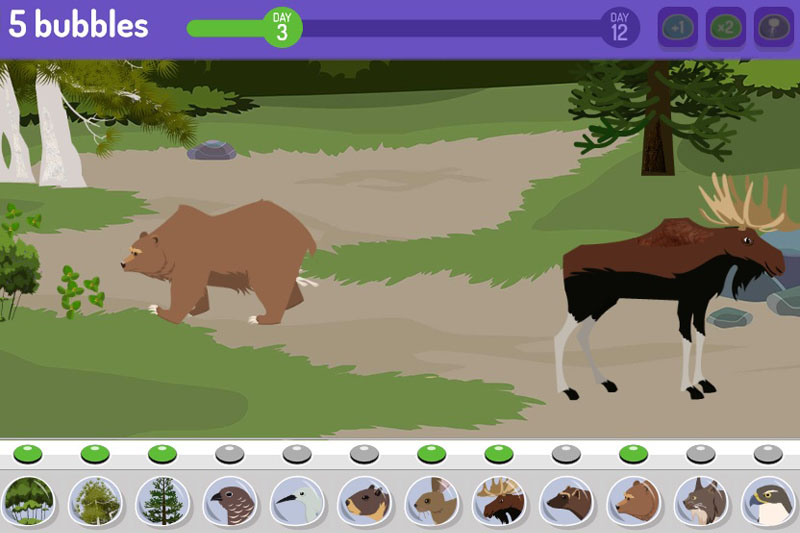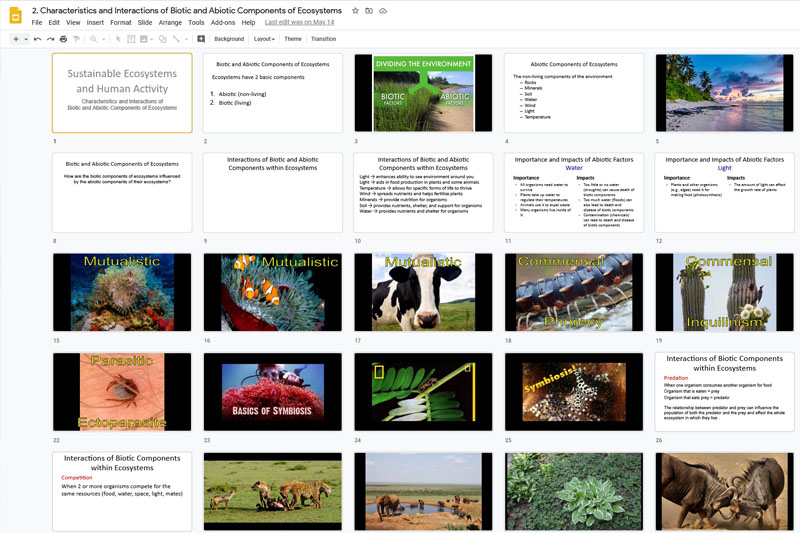The year is drawing to a close, and what an adventure it has been on many fronts. In the microcosm of grade nine science, we ended the virtual year off by examining ecosystems. First, we looked at some of the basic concepts and terminology related to ecology, and then zoomed into the various ecosystems Earth has to offer. After examining the living (biotic) and non-living (abiotic) components of ecosystems, we spent some time examining how the biotic factors interacted with the abiotic factors, as well as how the biotic factors interacted with one another. We discussed symbiosis, predation, energy flow, limiting factors, and competition (for food, resources, shelter, etc).
Students played an interactive online game called Mountain Scramble, where they had to try balancing all the living things in an ecosystem over a twelve day period, giving them a hands-on look at how difficult a task it can be (way to go nature!). For the end of the unit, we looked at the similarities and differences of aquatic and terrestrial ecosystems, and the impacts various human activities have on them. To demonstrate their knowledge and understanding of the unit, students worked on an assignment where they analysed the impacts housing development and fertilizer use can have on local ecosystems, and proposed some ways to lessen the negative impacts.




